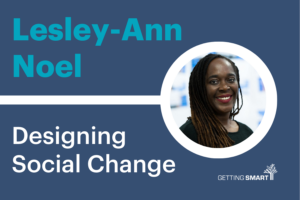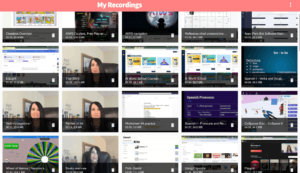Educators Continue Innovating with App Smashing

Teachers are relentless in their pursuit of innovation. They seek after solutions to perceived or previously unarticulated problems in an effort to further engage their students and meet the needs of each individual learner. And while there are a number of new, innovative methods for achieving these goals, one of particular interest is App Smashing.
It’s the practice of using a variety of apps to create a single project that is then uploaded or published to the Internet. A natural point of entry for implementing technology into learning, App Smashing has a lot of educators smitten. But is this new instructional approach simply another fad, or is there substance to “smashing?”
Greg Kulowiec (@gregkulowiec), largely credited with coining the term “App Smashing,” often begins his professional development sessions on the strategy by asking, “Why limit our students to one tool at a time?”
What App Smashers soon discover after being introduced to the practice is that many iOS apps can be connected by exporting created products to the Camera Roll in order to then import them into secondary apps. As an example, Greg illustrates how an avatar can be created using Tellagami then, by funnelling it through the Camera Roll, can be included as a foreground narrator in an Explain Everything screencast. Though a basic example of App Smashing, this sequence illustrates the concept and piques curiosity in the what App Smashing enables.
Craig Badura (@mrbadura) has latched onto App Smashing with his students and professional learning network, inspiring them to experiment with creating their own digital recipes in his App Smash Challenge. As teachers share their ideas for integrating apps with one another, Craig explains, “It doesn’t have to be earth shattering. What you think as menial could be magnificent to another teacher.”
But it does have to be simple. Rather than creating a complicated machine to perform some task in an indirect and convoluted way, the focus of App Smashing should be on engagement with content learning through leveraging compatible digital tools.
Jeremy Macdonald (@mrmacnology) cautions, “If we have to distract our students with these tools from what they are learning to keep them interested, we’re missing the point.”
App Smashing, in other words, should provide a solution to a previously identified classroom need. It shouldn’t be a fun idea looking for an excuse to interrupt learning.
When contextualized as offering a relative advantage, according to Edudemic, “App Smashing projects have the ability to enable student collaboration . . .aligned to several Common Core Standards across grade levels.”
The key is allowing students to explore and experiment with what works and what doesn’t.
In Technology and the Basics, George Couros (@gcouros) writes that, “We all need options, and if we are to truly empower our learners, we have to ensure that we help them find what works for them, not us.”
So, while educators utilize App Smashing to problem solve and innovate, they must do so without forcing students to create their learning products in a certain way. Otherwise, App Smashing could end up as a buzzword and a fad. And no avatar wants to narrate that story.




0 Comments
Leave a Comment
Your email address will not be published. All fields are required.